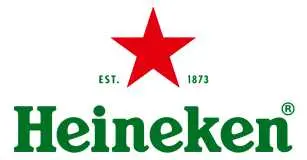Warehouse robots are self-driving or semi-autonomous machines that perform a variety of activities in a warehouse or distribution centre. These robots employ sensors, cameras, and complex navigation algorithms to roam the warehouse, interface with merchandise, and complete duties efficiently. Material handling, order fulfilment, inventory management, palletizing and depalletizing, sorting, cleaning and maintenance, and security are among the functions that warehouse robots can undertake. Warehouse robots have several benefits, including increased efficiency, productivity, and precision. These robots can work around the clock and complete repetitive activities at a far faster rate than humans, resulting in a huge increase in operational efficiency. Furthermore, they help to reduce costs by reducing errors and automating labour-intensive activities across a variety of industries.
United States Warehouse Robotics Market Driving Factors and Challenges
Driving Factors- The labour crisis in the warehousing and logistics industry is a major driver for the deployment of warehouse robotics. As labour markets tighten and wages rise, firms have the issue of maintaining efficient operations while controlling labour expenses. Warehouse robots provide a cost-effective option by eliminating the need for human labour, especially in repetitive and physically demanding activities. These robots can work around the clock, eliminating difficulties like shift-based employment, sick leave, and turnover. By automating processes such as material handling, palletizing, and order sorting, businesses can shift human workers to more value-added jobs, increasing operational efficiency while also solving labour-related concerns.
Challenges- The integration of warehouse robotics into current warehouse infrastructure can be complicated and difficult. Different types of robots, such as autonomous mobile robots (AMRs) and robotic arms, may need to collaborate seamlessly, frequently in conjunction with existing conveyors, storage systems, and business software. Ensuring compatibility and easy integration of various technologies can be a major challenge. This difficulty also applies to software and data management, since robots systems must communicate effectively with warehouse management systems (WMS), inventory control, and order management systems. Ensuring that all of these pieces operate together involves careful design, investment in appropriate software interfaces, and maybe special software development.
Impact of COVID-19 on United States Warehouse Robotics Market
The COVID-19 epidemic has had a huge impact on the warehouse robotics sector. The virus outbreak resulted in a dramatic rise in demand for vital items, e-commerce, and online retail. Warehouses and distribution centres faced unprecedented hurdles in serving rising demand while following to social distancing and safety protocols. As a result, the adoption of warehouse robotics increased as businesses tried to automate activities and eliminate human involvement in their facilities. This boom in demand for robotics solutions has resulted in increasing R&D investments, resulting in more advanced and efficient robotics technology.
United States Warehouse Robotics Market Key Players:
The market study provides market data by competitive landscape, revenue analysis, market segments and detailed analysis of key market players such as Zebra Technologies Corp, GreyOrange Pte Ltd, Locus Robotics Corporation, inVia Robotics, Inc, FANUC America Corporation, OMRON Corporation, Yaskawa America, Inc, Honeywell International Inc.
United States Warehouse Robotics Market Segmentation:
By Type: Based on the Type, United States Warehouse Robotics Market is segmented as; Articulated, Gantry, Automated Storage and Retrieval System (ASRS), Mobile, Others.
By Function: Based on the Function, United States Warehouse Robotics Market is segmented as; Storage, Trans-shipments, Packaging, Others.
By End User: Based on the End User, United States Warehouse Robotics Market is segmented as; Food and Beverages, Automotive, Retail, Electronics and Electrical, Pharmaceuticals, Others.
By Region: This research also includes data for North, South, West, Mideast.
This study also encompasses various drivers and restraining factors of this market for the forecast period. Various growth opportunities are also discussed in the report.






















